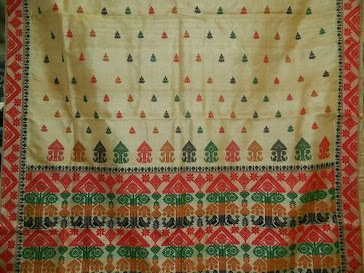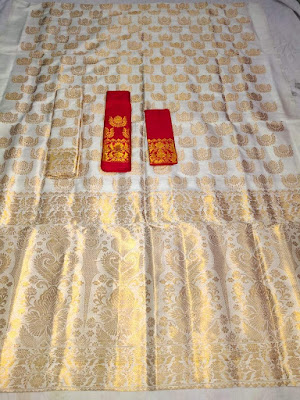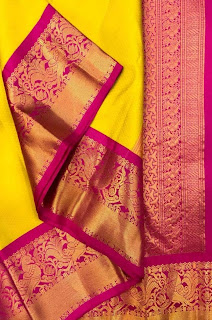TRADITIONAL SAREES FROM ASSAM : TYPE, DESIGN AND LOOK WITH IMAGES
Assam is famous all over India and abroad for its high quality silk handloom since ancient times. Silk and hand-weaving are Assam’s heritage, the craft of weaving grows sophisticatedly along with the various types of silk production. It is the Kiratas(a tribe in Assam) who introduced the cultivation of silk with its different varieties in Assam and from there silk was later introduced to mainland India. Assam silk was originated in two specific regions of Assam, one was Garo Hills in the ancient Kamrupa kingdom and the other was Dhakuakhana in the ancient Chutiya kingdom. Assam Silk is the gift of nature and very skin friendly due to its organic composition.
Traditional Assam silk is the pride of every Assamese, they flaunt it in style and grace, denotes the three major types of indigenous wild silks as -
MUGA SILK SAREE
The most prominent and prestigious traditional Muga silk saree of Assam is known for its glossy, fine texture, durability and golden colour. The Assamese word 'Muga' which means yellowish. This variety of silk was reserved only for use by the royal families, that time silk was used together with zari to weave fabrics. Nowadays the zari is replaced by the multi coloured cotton threads. Muga silk is one of the most costly fabrics in the world. The traditional designs are woven into these fabrics are drawn , inspired by the flora of Assam, the motifs are usually flowers, leaves, birds, animals, and geometrical designs. Related to this, one of the special things is the bamboo weft designs which are eight in number and used as variations in the weaving patterns. Assam received the Geographical Indication (GI) tag for Muga silk in 2007. Muga silk thread is one of the strongest threads, it ages with the owners and sometimes even outlives them. This traditional silk can be hand washed and its luster increases after every wash.
PAAT SILK SAREE
The Paat silk comes in usually brilliant white or off-white colour, has excellent durability and is known for its glossy quality and distinctive brightness. Traditional white Paat saree is generally worn by Assamese bride during her marriage ceremony. Paat silk can be dyed too and therefore a variety of colours with latest motifs are available. The Paat sarees include traditional motifs that are inspired by nature like- flower, human figurines, animal, creepers and ornamental motifs. The motifs usually embellish the sari around the border and in the middle.

ERI SILK SAREE
The name Eri is derived from the Assamese word “Era” which means “Castor”, as the silkworm feeds on “Castor plants”. It is also popularly known as non-violent silk because this silk is produced, without causing any harm to the silkworm. Traditional Eri silk sare is woolly, coarse, fine and dense in texture, has thermal qualities which makes it perfect for both winter and summer use. The versatile fabric, Eri silk is a preferred choice for traditional Assamese saree because of qualities like durability, strength, soft texture and moisture absorbency. The beauty of this silk is that although it does not have the shine but it has anti-fungal properties, is a good insulator, and a hardy fabric. Eri silk saree nowadays can be dyed too in many colour variants.


























Hi,
ReplyDeleteI respect you and I like your website as well. It’s an insightful platform.
I see here a nice details
It’s useful for me.
Write More for us,
thank
you
This information is really useful and it helps me a lot for clearing my doubts. vera Bradley duffel bags under 100.
ReplyDelete